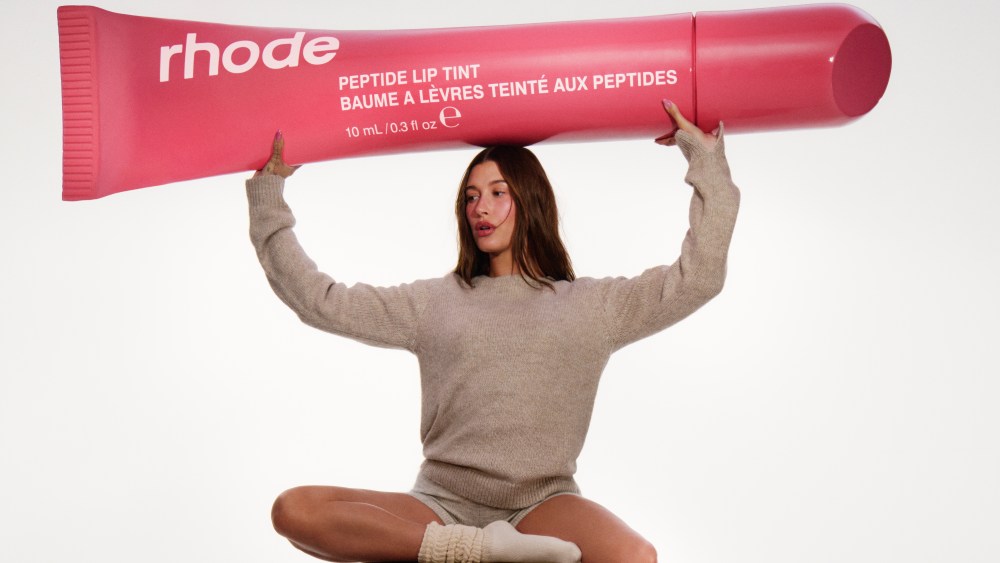Hailey Bieber’s beauty brand, Rhode, is making headlines as it seeks to explore potential deals with the help of financial heavyweights J.P. Morgan and Moelis, aiming for a valuation of around $1 billion. This comes at an interesting juncture for the beauty industry, where mergers and acquisitions (M&A) have been largely stagnant lately. While Rhode has reportedly generated sales of about $200 million, the broader market for beauty brands has been challenging, with many high-profile names like Rare Beauty and Makeup by Mario failing to secure lucrative deals. The scrutiny around Rhode’s financial health and operational model raises questions about whether it can break the elusive “beauty M&A curse.”
There is skepticism among industry insiders regarding Rhode’s ability to attract strategic buyers, especially since the brand operates solely online for now. As one source pointed out, potential acquirers might be wary of the risks involved, with many preferring to wait until the market stabilizes. Acquiring a brand that relies heavily on the celebrity status of its founder can be seen as a gamble, particularly when the brand is still in its formative stages and lacks extensive distribution channels. Past instances have shown that investors are slowing down when it comes to investing significant sums in emerging beauty brands, a situation that could disadvantage Rhode as it tries to navigate this tricky landscape.
Another major factor impacting Rhode’s M&A prospects is the overall financial environment, which has been characterized by uncertainty and hesitation among buyers. Recent reports indicated that several brands have attempted to enter the market over the past year but fell short of striking deals due to a lack of suitable buyers or reluctance to make sizable investments. Observers question whether Rhode can command a valuation comparable to its peers given the current economic climate. With brands such as Rare Beauty and Makeup by Mario not securing similar sums, it becomes increasingly difficult to justify Rhode’s asking price, particularly considering its limited retail presence.
Despite these headwinds, there are indications that Rhode may be positioning itself for retail partnerships in crucial markets, most notably speculations about an upcoming collaboration with Sephora. However, the logistics of managing a retail distribution model aren’t simple, raising concerns about whether Rhode would have the necessary infrastructure to support such a venture successfully. Stakeholders point out that simply gaining access to retailers doesn’t guarantee a successful transition, especially when it comes to managing operations, marketing, and consumer relationships effectively.
Complicating matters further, more traditional marketing practices are emerging as brands begin to rethink their reliance on social media visibility. While Hailey Bieber’s social media savvy initially served as a boon for the brand, some insiders suggest that a relentless focus on virality may hurt long-term profitability. Companies are increasingly wary of relying on unpredictable spikes in online engagement to sustain sales, which complicates Rhode’s approach in a market that is evolving away from such strategies. This shift could affect the brand’s future campaigns, which have drawn in diverse talent to enhance Rhode’s visibility.
On a somewhat positive note, the beauty industry has begun to show signs of recovery with smaller deal activity, as evidenced by Kim Kardashian’s Skims acquiring her own beauty line, Skkn by Kim, earlier in the year. The acquisition landscape is shifting, albeit slowly, as brands adapt to changing industry dynamics. Nevertheless, Rhode’s potential for a billion-dollar deal remains uncertain, and much will depend on its ability to address investor concerns while proving its market viability amid an ever-tightening landscape for beauty brands. The coming months will be pivotal for Rhode as it seeks to establish itself, expand its footprint, and possibly break the M&A pattern that has left many beauty brands struggling.

